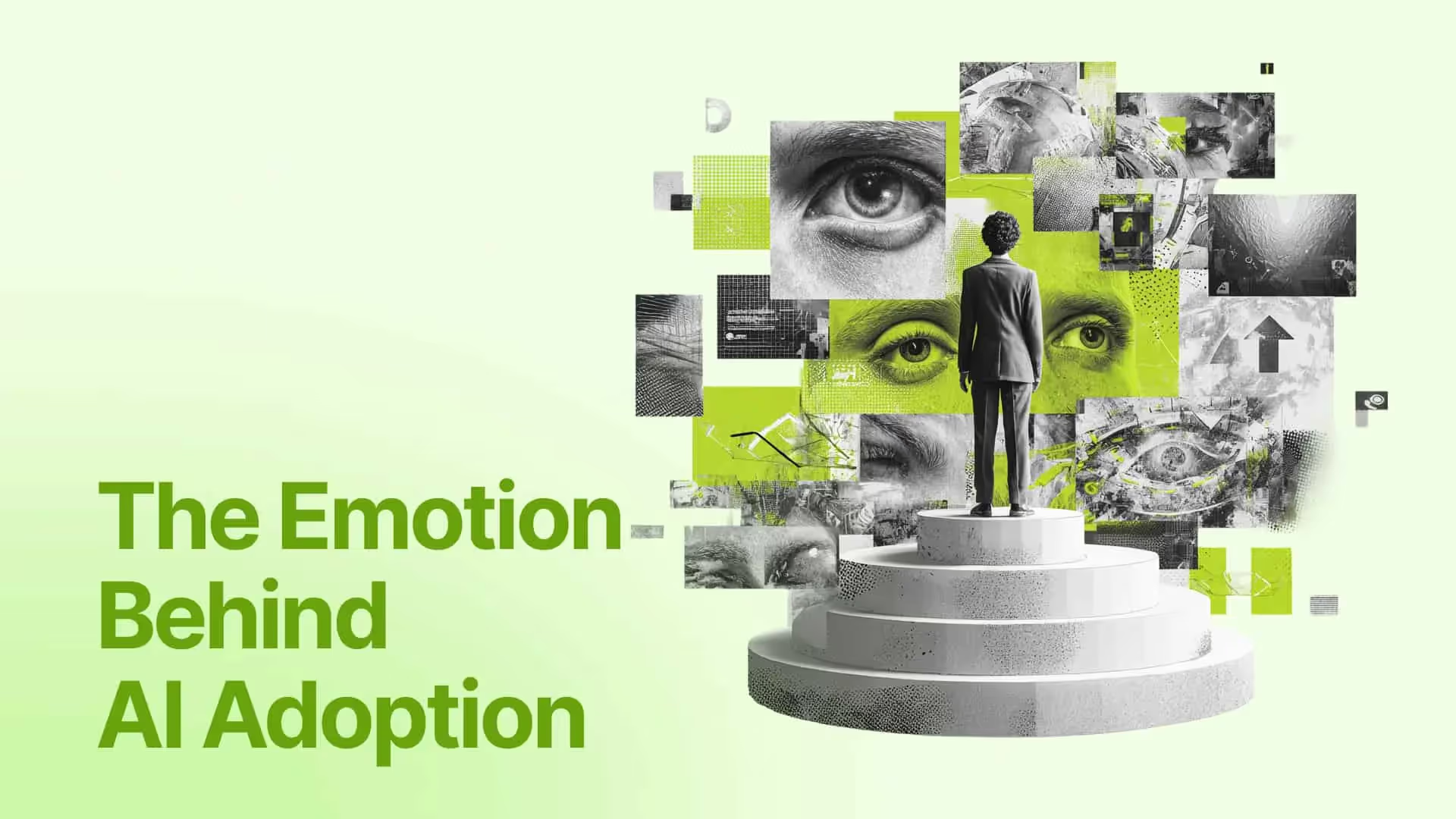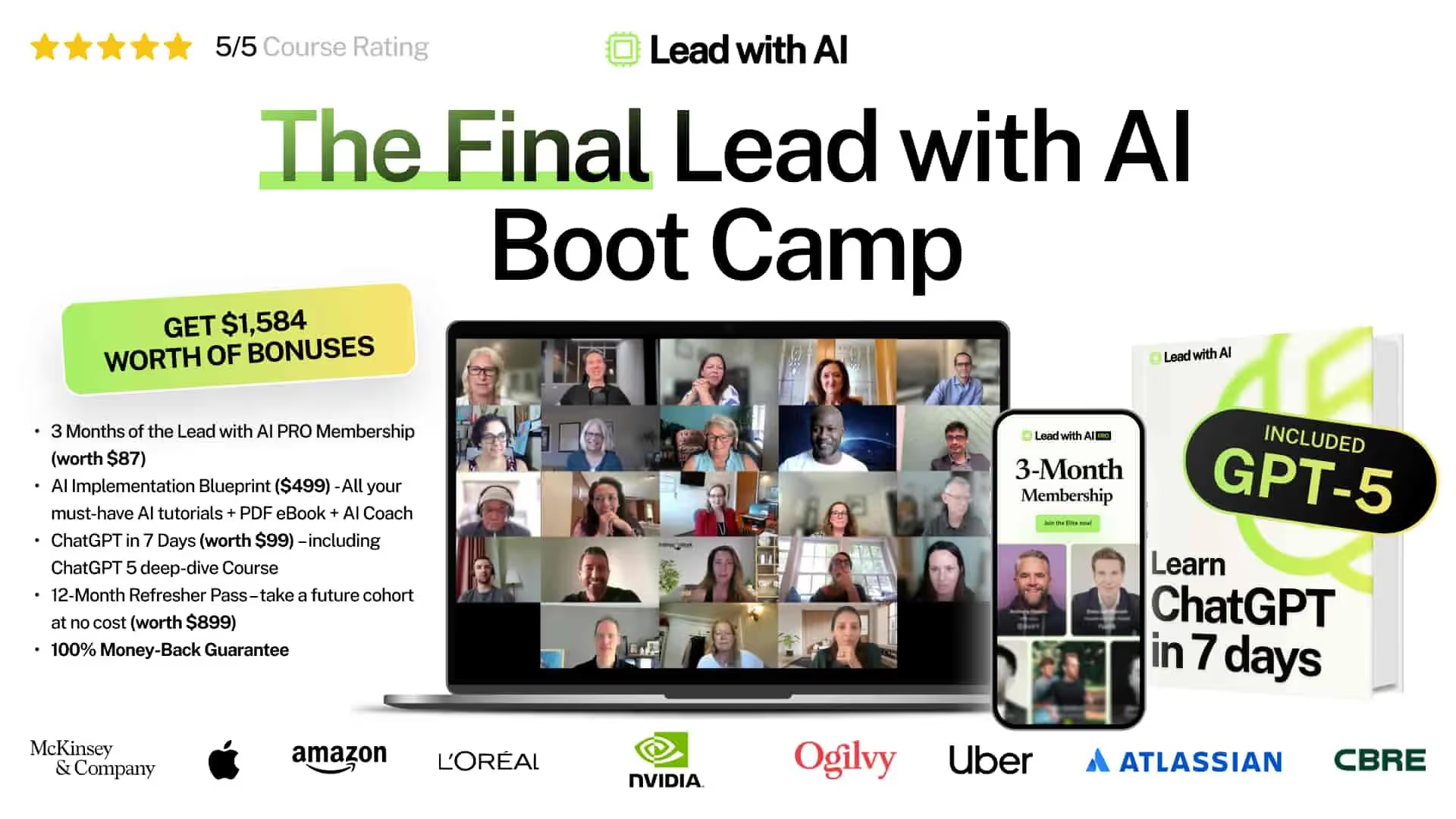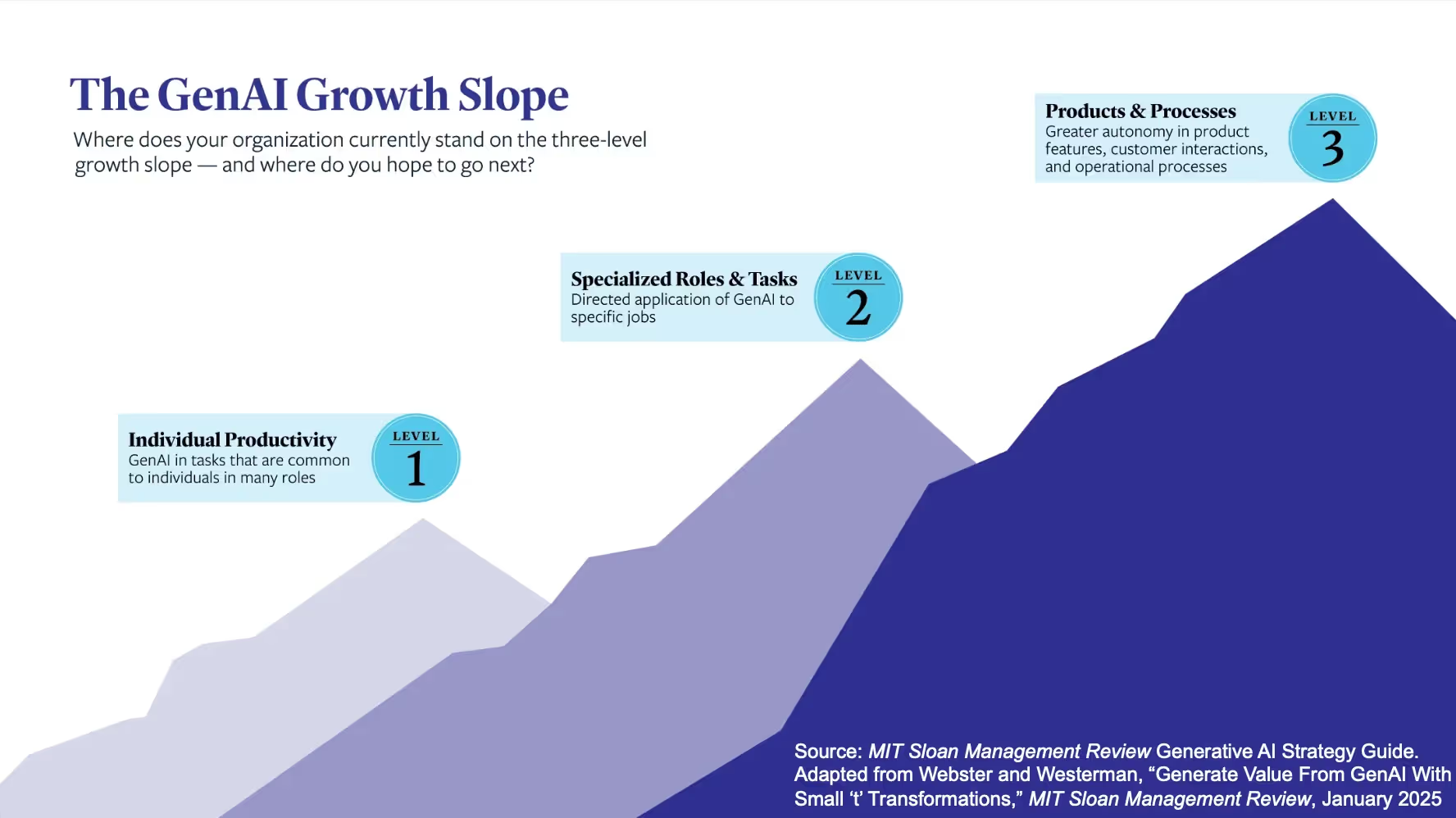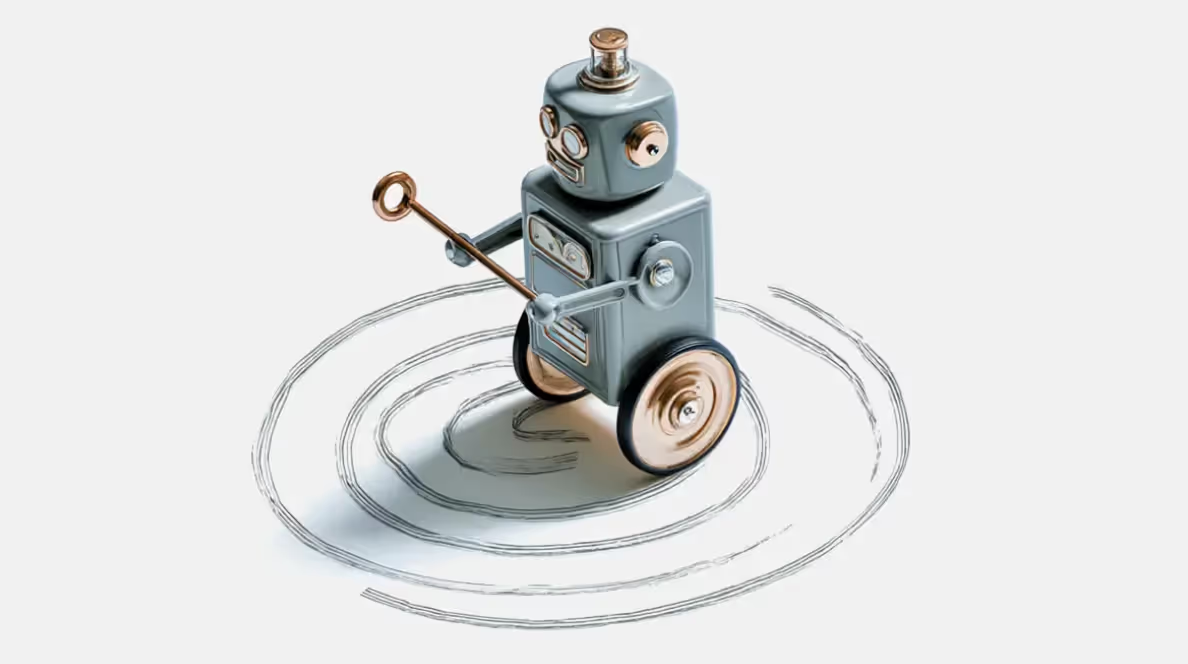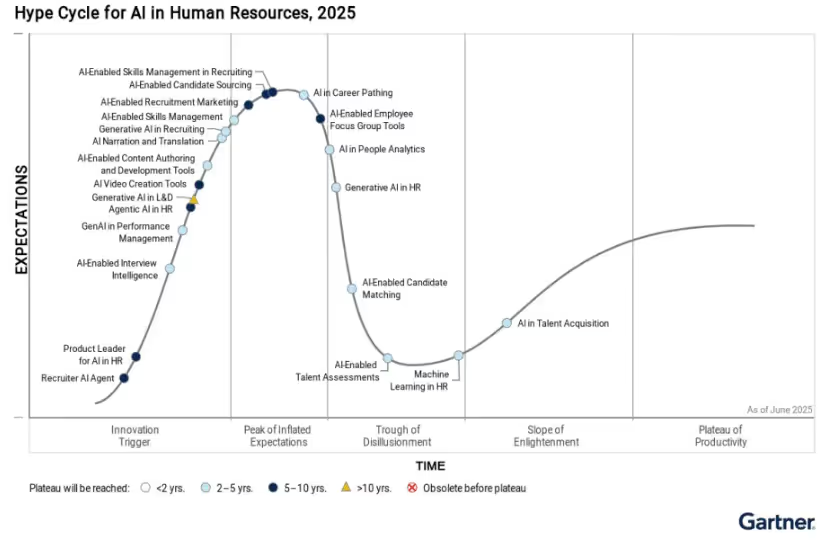
AI Adoption Runs on Employee Emotions
When I spoke with Debbie Lovich (MD & Senior Partner @ BCG) about AI adoption last year, one thing she said stuck with me:
“AI gives leaders a rare chance to redesign work so it becomes both more productive and more fulfilling.”
Productive means performance. Fulfillment is an emotion.And that balance, between efficiency and empathy, is where AI adoption succeeds or stalls.
The 2025 BCG × Columbia Business School study, based on ~1,400 employees and leaders, found that employee centricity explains 36% of the difference between organizations that successfully adopt AI and those that don’t.
Companies that listen to and support their people are seven times more likely to reach high AI maturity. But enthusiasm for AI is not evenly shared.
- 96% of executives report positive emotions about AI.
- Only 63% of employees do.
- Leaders are 51 points more likely to believe teams are well informed about AI, and 45 points more likely to think people are enthusiastic.

Perceptyx’s Beyond the Hype: GenAI 2025 report shows the same pattern emerging across thousands of employees worldwide. While 70% of employees say their organization has at least “some” GenAI integration, only 15% report it’s fully embedded in daily work. That shallow adoption mirrors another gap: leaders believe employees are optimistic and informed about AI, but the frontline often feels anxious, under-supported, and excluded from decisions.
That optimism gap creates friction. Technology is moving fast. Human readiness isn’t.
The next stage of AI maturity depends on closing the gap between confidence at the top and experience on the ground.
The Emotion Gap Inside Organizations
In my work with leaders across boot camps and client programs, one pattern repeats: AI adoption rarely fails for technical reasons. It fails because people feel left behind.
BCG’s data backs this up. Optimism drops the lower you go in the org chart. Executives feel empowered. Middle managers are curious but cautious. Frontline employees are often anxious or indifferent.
As Brian Elliott from Charter & Work Forward calls it, this is the social failure of technical success.The systems work perfectly, but people don’t feel ready to use them.
Pew Research has lately seen the same pattern globally in "How People Around the World View AI". In most countries, people are more concerned than excited about AI. In the United States, Italy, and Australia, about half of adults say they are more worried than hopeful. Concern is highest among older adults, women, and those with less education.
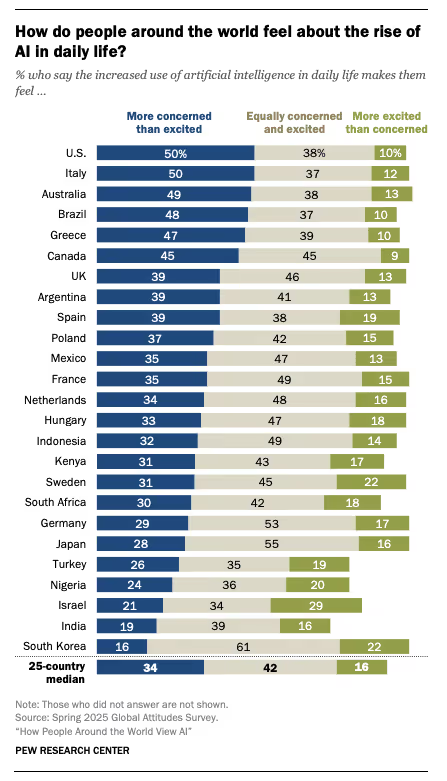
The antidote is understanding. Optimism rises when people know how AI is used and why.
That’s why explaining the why behind AI matters as much as teaching the how. When employees see a clear purpose, anxiety drops. When they don’t, they fill the silence with fear.
BCG calls this the “illusion of alignment.” It’s when leaders assume excitement where there’s only confusion.
Bridging that illusion takes more listening than talking. Emotion isn’t a side issue in AI adoption. It’s the main one.
Employee Centricity as the True Predictor of AI Success
The study isolates employee centricity as the strongest predictor of AI maturity, stronger than industry, size, or department.
Employee-centric companies share a few traits. They listen to feedback and act on it. They offer fair growth opportunities. They treat people with respect. They support both professional and personal well-being. They design flexible systems built on trust.
These are not soft values. They are operating systems for digital trust.
In such environments, employees are 70% more likely to feel enthusiastic about AI, 92% more likely to understand company strategy, and 57% more likely to see their organization as faster than competitors in adopting technology. They are also 43% more motivated, 36% more likely to stay, and 34% more likely to rate financial performance higher.
That’s a lot of ROI for culture.
Brian has seen this firsthand. Companies like Zillow, with distributed teams and autonomy, tend to adopt AI faster. As Annie Dean from CBRE put it, “AI can’t pick up insights from watercooler conversations. Trust and context do that.”
Fear-based leadership produces the opposite. When AI is framed as a threat to efficiency rather than a tool for growth, morale sinks.
The best organizations treat employees as co-designers of the future, not subjects of automation.
Employee centricity doesn’t just predict AI readiness. It predicts resilience. When people feel seen and supported, technology becomes a partner, not a pressure.
Leadership, Learning, and the Role of Joy
When Debbie and I talked about joy at work, she said something that reframed AI for me:
“Joy isn’t about perks. It’s the energy that comes from autonomy, contribution, and progress.”
That energy is what leaders need to unlock.
Her research found that teams with AI-engaged managers are four times more likely to adopt AI successfully. These managers use the tools themselves, explain their purpose clearly, and create safety for experimentation.
But here’s where most organizations stumble. Leaders often mistake their own comfort with AI for organizational readiness. Frontline employees live a different reality — unclear expectations, inconsistent support, mixed messages.
When leaders are informed but distant, they confuse compliance with confidence.
The most effective managers close that gap by learning alongside their teams. They turn abstract ambition into tangible learning.
It’s what lets leaders test assumptions, ask better questions, and sense resistance before it becomes pushback.
AI success depends on how well leaders learn from their people. When leadership confidence meets employee reality, innovation turns from pressure into progress.
The Bottom Line: Leading with Understanding
The next phase of AI maturity depends on communication, not code.
Leaders who bridge emotion and information will move faster than those who rely on direction alone.
Here’s the playbook I share in our Lead with AI sessions:
- Map your audience. Identify who is curious, who is ready, and who is skeptical. Tools like Phil Kirschner’s Forces of Change can help visualize these dynamics.
- Create a shared baseline. Explain why AI is being used and how it affects workflows. Keep it simple and consistent.
- Model the behavior. Use AI tools yourself and share what you learn. Visibility beats messaging. In our Executive Boot Camp, most leaders say they want to learn AI not just to stay relevant, but to show their teams that curiosity is leadership in action.
- Co-create the workflow. Bring teams into the design process. Train managers to see anxiety and confusion as data, not defiance.
- Install feedback loops. Turn communication into a two-way system. Let employee questions shape your next step.
AI adoption isn’t a technical rollout. It’s an emotional relationship.
We’re entering the age when few workflows will remain fully human-only, so the real question is how human we choose to stay in the process.

